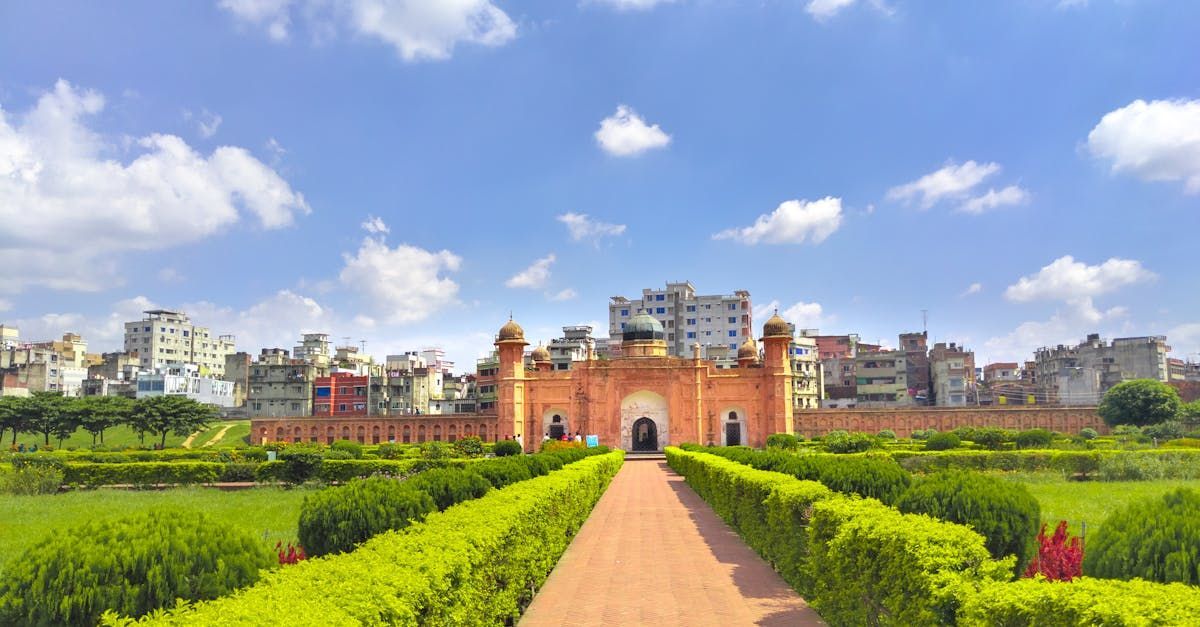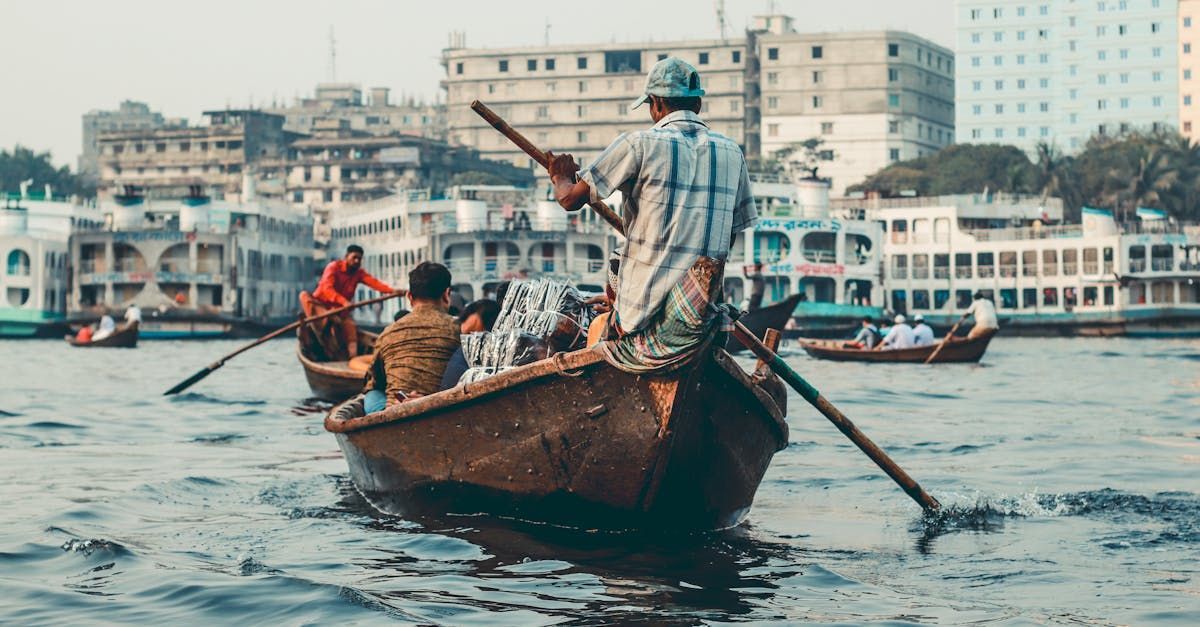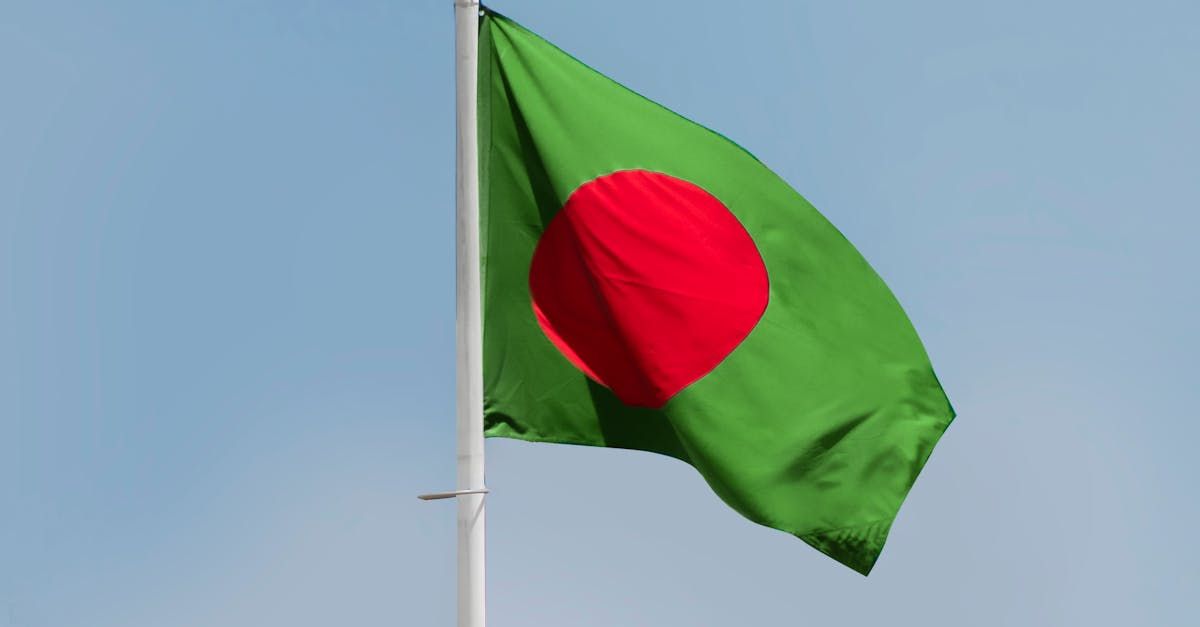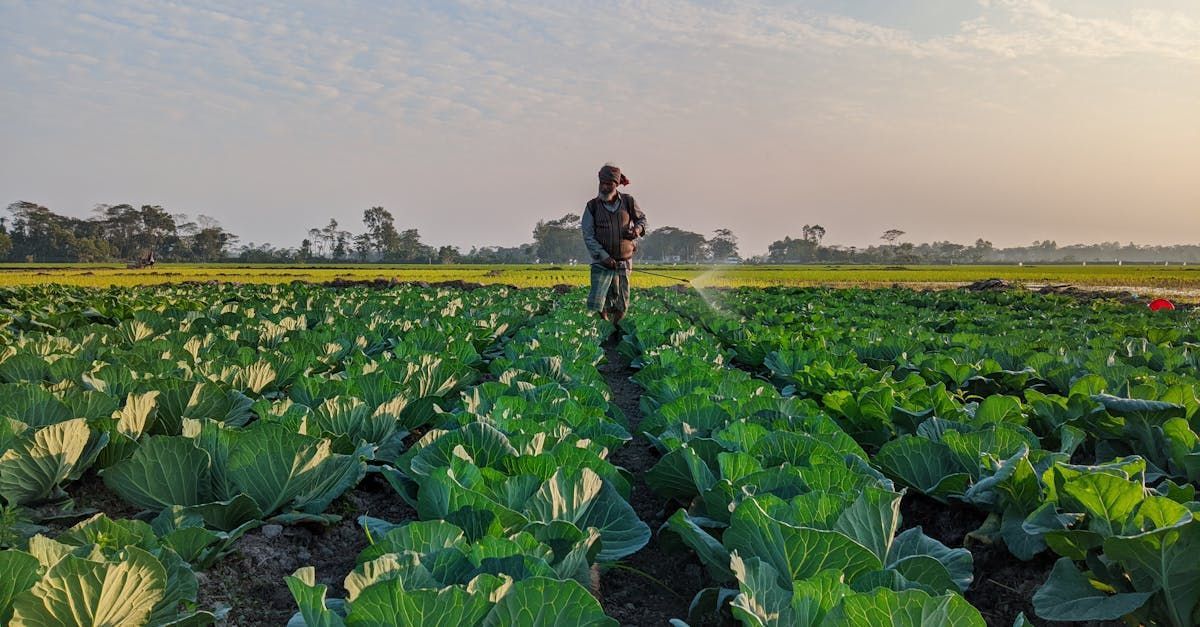Bangladesh
Beautiful Bangladesh

Bangladesh Travel: Overview
Bangladesh, a country in South Asia, is a hidden gem waiting to be discovered. Located in the eastern part of the Indian subcontinent, Bangladesh is a land of rich history, vibrant culture, and breathtaking natural beauty. With its warm hospitality, delicious cuisine, and exciting attractions, Bangladesh is an ideal destination for travelers seeking an off-the-beaten-path experience.
History and Culture
Bangladesh has a rich cultural heritage, shaped by its long history and diverse influences. The country is home to numerous ancient archaeological sites, including the Mahasthangarh and the Lalbagh Fort. The city of Dhaka, the capital, is a melting pot of cultures, with its bustling streets, vibrant markets, and historic mosques. The country's cuisine is also a reflection of its cultural diversity, with popular dishes like biryani, kebabs, and sweets.
Natural Beauty
Bangladesh is home to some of the most beautiful and diverse natural landscapes in the world. The country has over 130 rivers, including the mighty Ganges and Brahmaputra, which flow through the country's fertile plains. The Sundarbans, a UNESCO World Heritage Site, is one of the world's largest mangrove forests, home to the endangered Bengal tiger. The country's hills and mountains offer stunning vistas, trekking trails, and waterfalls.
Attractions
Some of the top attractions in Bangladesh include:
• Majestic Mosques: Bangladesh is home to numerous historic mosques, including the Lalbagh Fort Mosque and the Baitul Mukarram National Mosque.
• Hill Stations: Sylhet's tea gardens and rolling hills offer breathtaking views of the surrounding landscape.
• Museums: The National Museum of Bangladesh in Dhaka showcases the country's history and culture.
• Wildlife: The Sundarbans offers boat tours to spot dolphins, monkeys, and other wildlife.
• Festivals: Bangladesh celebrates numerous festivals throughout the year, including Eid-al-Fitr and Eid-al-Adha.
When to Visit
Bangladesh is a year-round destination, with temperatures ranging from 20°C to 35°C (68°F to 95°F). The best time to visit is during the winter months (December to February), when the weather is mild and pleasant.
Getting There
Bangladesh is easily accessible by air or land. The Hazrat Shahjalal International Airport in Dhaka is connected to major cities around the world. The country also shares borders with India, Myanmar, and Nepal, making it easy to visit from neighboring countries.
Visa Requirements
Visitors from most countries need a visa to enter Bangladesh. Citizens of certain countries can obtain a visa on arrival or online before traveling.
Safety
Bangladesh is generally a safe country for tourists, but it's always important to take necessary precautions to ensure your safety. Be mindful of pickpocketing in crowded areas and avoid traveling alone at night.
In conclusion, Bangladesh is a fascinating destination that offers something for everyone. From its rich history and culture to its stunning natural beauty and exciting attractions, Bangladesh is an ideal destination for travelers seeking an unforgettable experience.

Things To Do in Bangladesh
Bangladesh offers a wide range of activities and experiences for travelers, from exploring historic sites and cultural attractions to trying delicious local cuisine and participating in outdoor adventures. Here are some of the top things to do in Bangladesh:
Explore Historic Sites
• Mahasthangarh: A 2,000-year-old archaeological site in Bogra, featuring ancient ruins and artifacts.
• Lalbagh Fort: A 17th-century Mughal fort in Dhaka, with stunning architecture and beautiful gardens.
• Baitul Mukarram National Mosque: One of the largest mosques in Bangladesh, with beautiful architecture and stunning views of the city.
Discover Cultural Attractions
• National Museum of Bangladesh: A museum showcasing the country's history and culture, with exhibits on art, archaeology, and ethnography.
• Dhaka University Campus: A historic campus with beautiful architecture and a peaceful atmosphere.
• Folk Arts and Crafts Museum: A museum showcasing traditional Bangladeshi crafts and folk arts.
Try Local Cuisine
• Bengali Cuisine: Try popular dishes like biryani, kebabs, and sweets at local restaurants.
• Street Food: Sample street food like chaat, kebabs, and falooda at local markets.
• Local Markets: Visit markets like Sadarghat, Chawkbazar, and Shapla Chawk to try local snacks and drinks.
Outdoor Adventures
• Sundarbans National Park: Take a boat tour to spot dolphins, monkeys, and other wildlife in the world's largest mangrove forest.
• Hiking: Explore the scenic hills and mountains of Sylhet, including the famous Ratargul Swamp Forest.
• River Cruises: Take a boat tour along the Ganges or Brahmaputra rivers to see the city's skyline from a different perspective.
Attend Festivals and Events
• Eid-al-Fitr: Celebrate the end of Ramadan with festivals and fireworks across the country.
• Dhaka International Film Festival: Attend one of Asia's largest film festivals, showcasing films from around the world.
• Bangladesh Open Golf Championship: Watch professional golfers compete at the country's premier golf tournament.
Learn About Local Culture
• Cooking Classes: Learn how to make traditional Bengali dishes like biryani and kebabs.
• Dance Classes: Take a class to learn traditional Bengali dances like Kathak or Manipuri.
• Language Classes: Learn basic Bangla phrases and vocabulary to enhance your travel experience.
Shopping
• Local Markets: Visit markets like Sadarghat, Chawkbazar, and Shapla Chawk to buy local handicrafts and souvenirs.
• Shopping Malls: Shop at modern malls like Bashundhara City or Star Plaza for international brands.
• Street Vendors: Try local street food and snacks from vendors at popular markets.
Day Trips
• Sonargaon Museum: Visit this museum located in Sonargaon, which showcases the history and culture of the region.
• Nalchiti National Park: Take a day trip to this national park to see wildlife like elephants and deer.
• Srimangal Hill Trains: Take a scenic train ride to Srimangal Hill for stunning views of the surrounding landscape.
These are just a few of the many things to do in Bangladesh. Whether you're interested in history, culture, food, or adventure, there's something for everyone in this vibrant country.

Fast Facts About Bangladesh
Bangladesh is a fascinating country with a rich history, vibrant culture, and stunning natural beauty. Here are some quick facts to help you plan your trip:
General Information
• Location: South Asia, bordering India, Myanmar, and Nepal
• Capital: Dhaka
• Population: Over 166 million people
• Language: Bengali (official), English (widely spoken)
• Currency: Bangladeshi Taka (BDT)
• Time Zone: UTC+6 (Bangladesh Standard Time)
History and Culture
• Independence: Gained independence from Pakistan in 1971
• Language: Bengali is the official language, with English widely spoken
• Religion: Islam is the main religion, with a significant Hindu population
• Festivals: Eid-al-Fitr and Eid-al-Adha are major festivals, along with Bengali New Year (Pohela Boishakh)
Travel Tips
• Visa: Citizens of many countries can obtain a visa on arrival or online before traveling
• Vaccinations: No specific vaccinations are required, but consult your doctor for advice
• Weather: Best time to visit is during the winter months (December to February), with temperatures ranging from 20°C to 25°C (68°F to 77°F)
• Safety: Take necessary precautions to ensure your safety, such as avoiding traveling alone at night and being mindful of pickpocketing in crowded areas
Practical Information
• Electricity: 230V, 50Hz, Type D power sockets
• Internet: Widespread internet access, with many cafes and restaurants offering Wi-Fi
• Transportation: Domestic flights, buses, and trains connect major cities; taxis and rickshaws are popular for short journeys
• Tipping: Not mandatory but appreciated for good service
Health and Hygiene
• Water: Tap water is not recommended for drinking; stick to bottled or filtered water
• Food: Try local cuisine like biryani, kebabs, and sweets, but avoid eating from street vendors or unhygienic stalls
• Medications: Consult your doctor before traveling and pack essential medications
Getting Around
• Flights: Domestic flights connect major cities like Dhaka, Chittagong, and Sylhet
• Buses: Private and government-run buses operate on major routes
• Trains: Train networks connect major cities, with some trains offering luxury services
• Rickshaws: Three-wheeled rickshaws are popular for short journeys
These fast facts will give you a quick overview of Bangladesh's history, culture, travel tips, practical information, health and hygiene, and getting around. Remember to always research thoroughly before traveling and stay informed about local conditions.

Travel Tips for Bangladesh Travel
Bangladesh is a fascinating country with a rich history, vibrant culture, and stunning natural beauty. However, traveling in Bangladesh can be challenging, especially for first-time visitors. Here are some essential travel tips to help you navigate the country safely and smoothly:
Before You Go
• Research: Learn about Bangladesh's culture, customs, and laws to avoid any misunderstandings.
• Visa: Check the visa requirements for your country and apply online or at the embassy if necessary.
• Insurance: Consider purchasing travel insurance that covers medical emergencies, trip cancellations, and delays.
• Vaccinations: Consult your doctor about recommended vaccinations and medications before traveling.
Packing
• Light clothing: Pack light, breathable clothing for hot and humid weather.
• Comfortable shoes: Bring comfortable shoes for walking and sightseeing.
• Power adapter: Bangladesh uses Type D power sockets, so pack a universal power adapter.
• Water bottle: Bring a refillable water bottle to reduce plastic waste and stay hydrated.
• Sun protection: Pack sunscreen, sunglasses, and a hat to protect yourself from the sun.
Getting Around
• Rickshaws: Rickshaws are a popular mode of transportation in Bangladesh. Negotiate the fare before you start your journey.
• Taxis: Taxis are available in major cities, but make sure to use reputable companies or negotiate the fare beforehand.
• Buses: Government-run buses are an affordable option, but they can be crowded and uncomfortable. Private buses are more comfortable but may be more expensive.
• Trains: Trains are a scenic way to travel in Bangladesh, but book your tickets in advance to ensure availability.
Staying Safe
• Pickpocketing: Be mindful of pickpocketing in crowded areas and tourist hotspots.
• Scams: Be cautious of scams targeting tourists, such as fake currency exchanges or overpriced souvenirs.
• Traffic: Be careful when crossing roads or walking in traffic, as drivers may not always follow traffic rules.
• Water quality: Avoid drinking tap water and opt for bottled or filtered water instead.
Health and Hygiene
• Waterborne illnesses: Take necessary precautions to avoid waterborne illnesses by drinking bottled or filtered water and avoiding uncooked food.
• Medications: Bring essential medications and consult your doctor before traveling.
• Sunburn: Protect yourself from the sun by wearing sunscreen, sunglasses, and a hat.
Cultural Etiquette
• Dress modestly: Dress modestly when visiting mosques or other religious sites.
• Remove shoes: Remove your shoes when entering mosques or temples as a sign of respect.
• Use your right hand: Use your right hand when shaking hands or giving gifts as a sign of respect.
• Respect local customs: Respect local customs and traditions, such as not touching someone's head or feet.
Communicating
• Language: Bengali is the official language, but English is widely spoken. Download a translation app or carry a phrasebook to help you communicate.
• Phone network: Mobile networks are widely available, but consider purchasing a local SIM card for better coverage.
• Internet: Internet cafes are available in major cities, but be cautious of internet scams.
By following these travel tips, you'll be well-prepared for an unforgettable adventure in Bangladesh. Remember to stay informed, respectful, and flexible, and you'll have a fantastic time exploring this incredible country.


